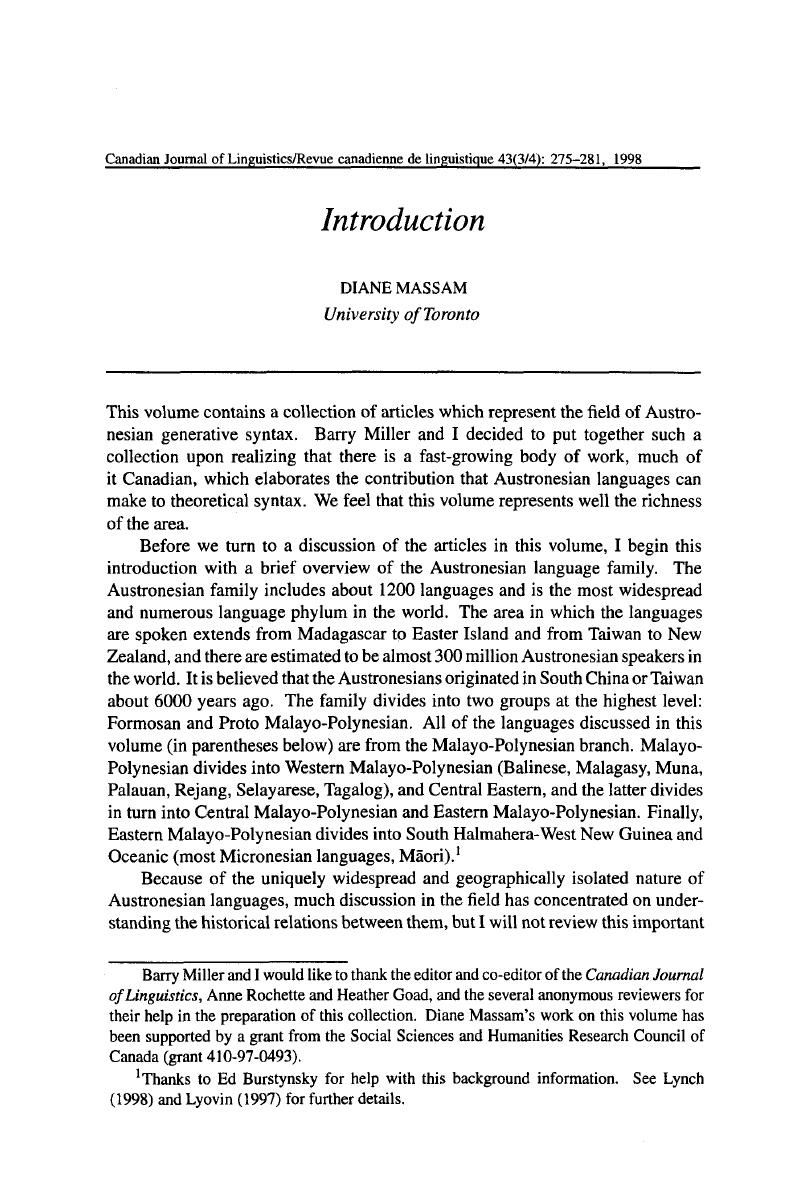Cooreman, Ann,
Fox, Barbara, and
Givón, Talmy.
1988.
The discourse definition of ergativity: A study of Chamorro and Tagalog Texts. In
Studies in Austronesian Linguistics ed.
McGinn, Richard,
387–
426. Center for International Studies,
Ohio University.
Google Scholar 